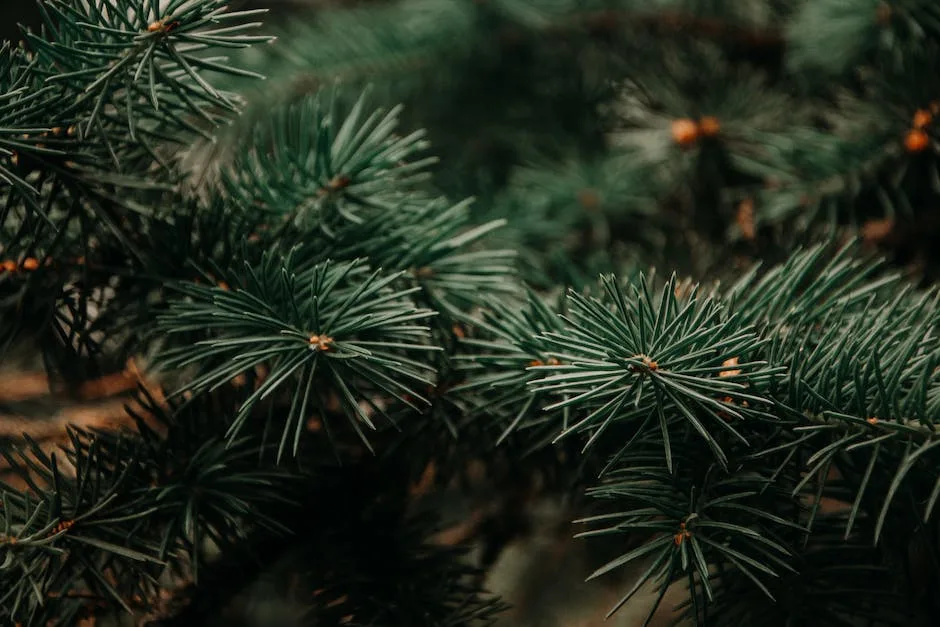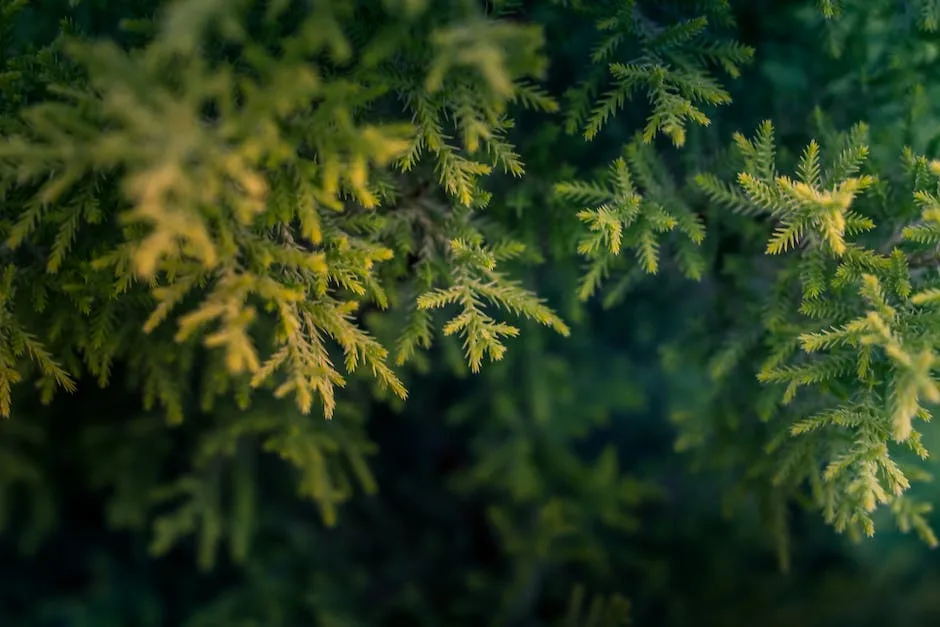Anyone who has ever walked through a particularly dense forest can attest to how closely pine trees can grow together. In fact, some types of pine trees are specifically grown close together in order to create dense forests used for commercial purposes, like forestry and paper production. However, when it comes to having a pine tree in your own backyard, you might be wondering just how close to your house is too close.
There is no definitive answer to this question as it can vary depending on the location and type of pine tree. In general, however, it is generally advisable to keep pine trees at least 10-15 feet away from structures such as houses in order to minimize the risk of damage from falling branches or other potential hazards.
Do pine trees cause foundation problems?
Pine trees are a great option if you’re looking for a tree that won’t damage your foundation. Their roots extend straight down into the soil, so they don’t have the lateral growth that can cause problems for your foundation.
While tree roots can damage a house foundation, it is more likely that they will only do so if the foundation is already compromised in some way. Tree roots are very opportunistic and will only grow and penetrate where it is easiest to grow, such as in friable soils and mulch. In most cases, tree roots will not cause any damage to a healthy foundation.
How far out do pine tree roots go
Pines have a deep tap root that can be twice the height of the tree. This tap root is used to anchor the tree and absorb water and nutrients from the soil. The shallower root system of a pine tree is used to support the tree and anchor it to the ground. These roots typically grow to a depth of 12 inches or less.
Pine trees are prone to breaking in high winds or under ice and snow loads in storms. This is due to their tall, full foliage which can act as a sail in strong winds, or be weighed down by heavy snow. If you live in an area prone to storms, it is best to avoid planting pine trees.
When should a pine tree be removed?
A pine tree that has all brown needles is most likely dead and should be removed. A pine that dies slowly after being damaged in a storm may keep yellow-green needles for a year or more and then suddenly turn yellow and quickly progress to brown.
Pine trees are a popular choice for landscaping and home decoration, but there are some disadvantages to consider before planting one. Pine trees, like other needled evergreens, drop needles throughout the year which can be a nuisance. They also exude a sticky sap which can be difficult to clean up and can attract insects. Pine trees need an acidic soil pH below 70 to thrive, so if your soil is not naturally acidic, you’ll need to take measures to lower the pH.
Is it good to have pine tree at home?
Pine trees are extremely effective in controlling soil erosion because their roots help to hold the soil in place. Pine trees are also a popular choice for erosion control because they are very hardy and can survive in most any soil conditions.
Pines are remarkable for their long lifespans, which can range from 100 to 1,000 years. The Great Basin bristlecone pine is the longest-lived of all pine species, with some trees living for over 4,800 years. These impressive trees are a testimony to the extraordinary resilience of nature.
What trees should not be planted close to a house
There are a few types of trees that you should avoid planting on your property. Red oaks are known for being messy, and sweetgums can be invasive. Bradford pears and Lombardy poplars are also not recommended, as they can be weak and susceptible to storm damage. Finally, ginkgo biloba and eucalyptus are not recommended for planting near houses or other structures, as their roots can damage foundations.
Topping large evergreen trees is not recommended as it can lead to internal decay, disease or infestation from damaging insects. Topping also removes the most productive portion of the tree, making it less likely to thrive in the long-term.
How long does it take a pine tree to grow 10 feet?
Pine trees are a type of coniferous tree that grows in many parts of the world. There are many different species of pine tree, and they can vary widely in size and growth rate. Medium-fast growing pine trees, like the red pine and the Australian pine, typically grow 1-2 feet per year. Fast growing pines, like loblolly pines and scotch pines, can grow two feet or more each year. Pine trees are an important source of timber, and they are also used in many traditional medicines.
scientists have discovered that trees grow faster the older they get. Once trees reach a certain height, they do stop getting taller. This is because they are no longer able to absorb as much water and nutrients from the ground. Instead, they rely on their leaves to collect sunlight and convert it into energy.
How do you tell if a tree is in danger of falling
If your tree starts to lean or shift suddenly, it may be in danger of falling. If your tree has multiple trunks, it may be unstable and more likely to fall. If your tree has a large hollow, it may be structurally unsound and at risk of collapsing. If your tree drops branches for no apparent reason, it may be weak and unable to support itself. If mushrooms begin growing on or under your tree, it may be rotting and in danger of falling. If other nearby trees have recently fallen, your tree may be at increased risk of falling.
Pine trees are incredibly resilient and are capable of withstanding surprisingly strong winds. Research shows that a mature pine tree can handle gusts up to 50 mph without impact, though more powerful gusts can lead to broken branches, uprooted trunks and even trees completely blown over.
Do pine trees deplete the soil?
It is important to be aware that an established pine’s roots can absorb substantial amounts of nutrients from the soil, leaving the surrounding area depleted. This can be a problem if other plants are trying to grow in the same space, as they may not have access to the nutrients they need. If you are concerned about this, it may be wise to supplement the soil with additional nutrients.
If you’re looking to add a pine tree to your lawn, there are a few things you should keep in mind. First, make sure you have enough space. Pine trees can grow quite large, so you’ll need to give them plenty of room to spread out. Secondly, Pine trees require well-drained, acidic soil to thrive. If your soil isn’t naturally acidic, you’ll need to amend it before planting your pine tree. Lastly, water your pine tree regularly, especially during its first year or two after planting. Once established, pine trees are quite drought-tolerant.
What does an unhealthy pine tree look like
If you see discolored needles on your pine trees, it could be a sign that they need more water or that they’re suffering from a disease or insect infestation. Some types of bark beetles can turn needles yellow or reddish-brown, while diseases like dothistroma needle blight can turn them brown, sometimes with dark brown stripes. If you’re not sure what’s causing the discoloration, it’s best to consult a tree care expert to diagnose the problem and recommend a solution.
If you notice any of the following signs, it’s possible that your tree is at risk of falling. Be sure to have a professional tree care company check it out to be safe:
1. Your tree has dead branches.
2. There are hollow spots in the trunk.
3. The roots are raising up.
4. Leaves are missing close to the trunk.
5. The trunk has big cracks or bark that’s missing.
What is the biggest threat to pine trees
A major threat to high elevation white pines and their ecosystems is a non – native fungus (Cronartium ribicola) that causes the disease white pine blister rust. All of the North American white pines are susceptible to the rust. The fungus was introduced to North America from Europe on nursery stock in the early 1900s and has since spread throughout the range of white pines. The disease affects all parts of the tree, but is most damaging to the needles and cones. Needles turn yellow and eventually drop from the tree, and cones dry up and fall to the ground. Heavy infestations can kill a tree within a few years. The loss of white pines has consequences for the ecosystem because the trees are a key resource for wildlife. White pines are an important food source for red squirrels, and the trees provide nesting sites for a variety of birds. The loss of the trees can also lead to changes in the structure of the forest because white pines are a dominant species.
Pinus spp) provides many benefits including shade, windbreaks, screening, and the soothing sounds of wind through the pine branches. The pine tree’s leaves and sap also produce a very pleasant fragrance.
What are the positives and negatives of pine
Pine is usually one of the cheaper hardwoods, making it a good choice for kids’ furniture that will need to be repainted frequently. While pine does dent and scratch easily, it also develops a nice patina from age and use, making it ideal for rustic-looking furniture. Unfortunately, because pine is a softwood, it is also more susceptible to shrinking and swelling than other hardwoods.
Trees certainly do increase property value! In fact, a study by the National Arbor Day Foundation found that good tree cover increased property prices by about 7 percent in residential areas and 18 percent for building lots. Furthermore, they also found that quality landscapes with healthy trees can increase retail spending from 9 to 12 percent.
Clearly, then, trees are a valuable asset for any property owner. Not only do they boost the curb appeal of a home or business, but they also have a direct impact on the bottom line. So if you’re looking to increase the value of your property, planting some trees is a great place to start!
Do pine trees have big roots
Pine trees tend to have a deep tap root system that can extend outwards from the tree up to twice the tree’s height. The shallower roots of the pine tree are typically only 12 inches deep from the ground surface level. The deep tap root system helps the pine tree to anchor itself deeply into the ground and also provides the tree with a large surface area to absorb water and nutrients from the soil.
Pine trees are an excellent way to purify the air around us. Not only do they release a great deal of oxygen into the atmosphere, but their scent is also helpful in reducing inflammation for people with asthma or allergies. If you have the opportunity to plant a pine tree, we encourage you to do so!
Final Words
There isn’t a definitive answer to this question since it can depend on a variety of factors, such as the size of the house and property, the type of pine tree, the climate, and so on. In general, however, it is generally recommended that pine trees be planted at least 20 feet away from houses.
A pine tree can be as close as 15 feet to a house. The roots of the pine tree will not damage the foundation of the house.

My interest in trees started when I first saw the giant sequoias in Yosemite.
I was a teenager then, and I remember thinking, “I need to learn more about this.”
That moment stuck with me.
A few years later, I went on to study forestry at Michigan Tech.
Since graduating, I’ve worked in a mix of hands-on tree care and community education.
I’ve spent over ten years helping people understand how to plant, maintain, and protect the trees in their neighborhoods.
I don’t see trees as just part of the landscape.
They are living things that make a real difference in our daily lives.
